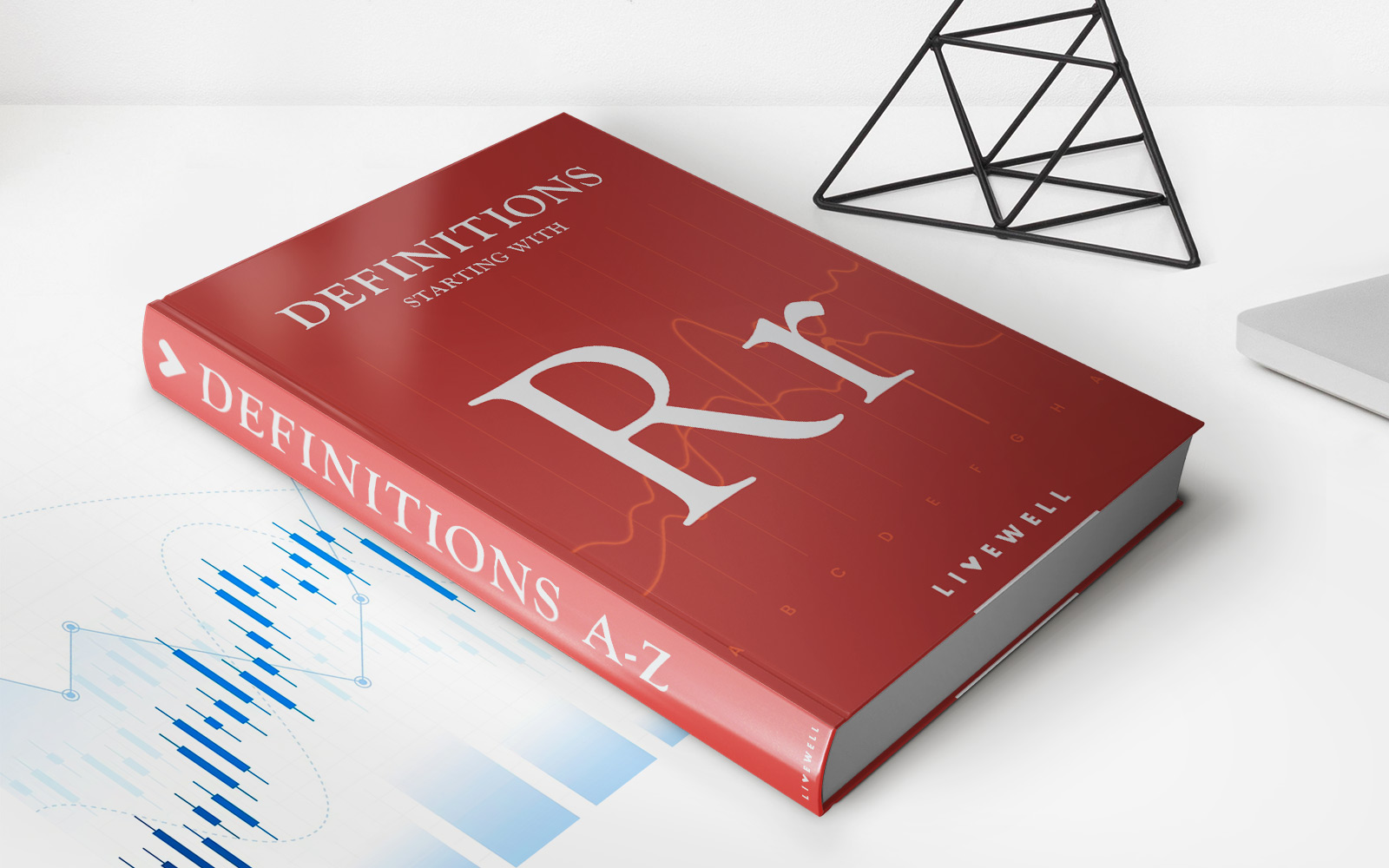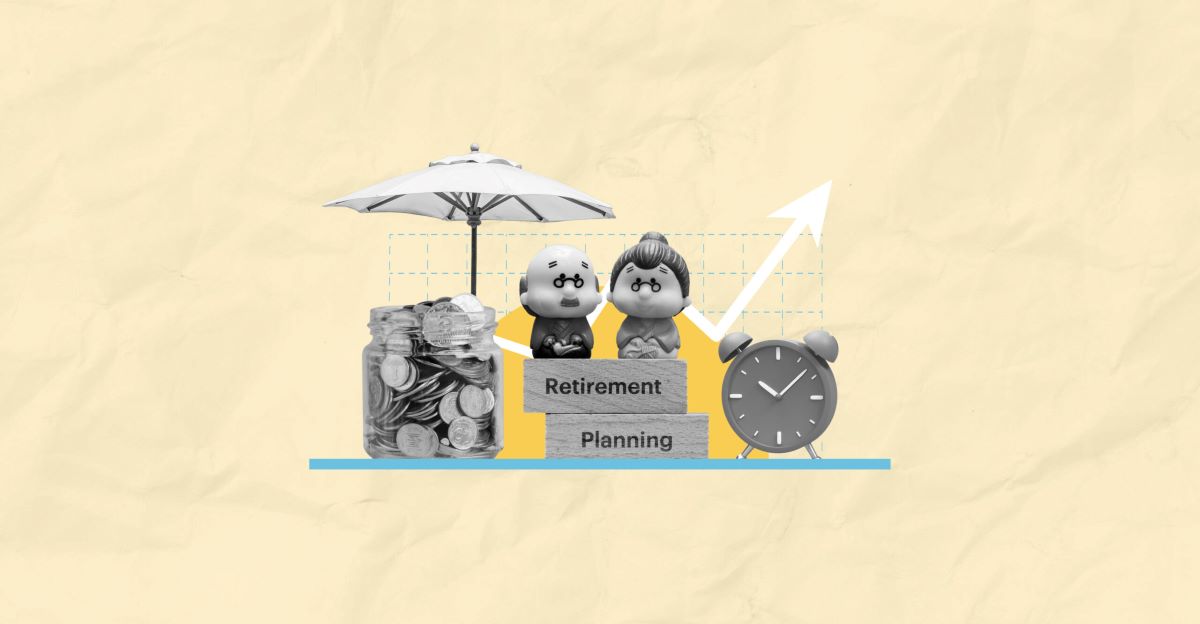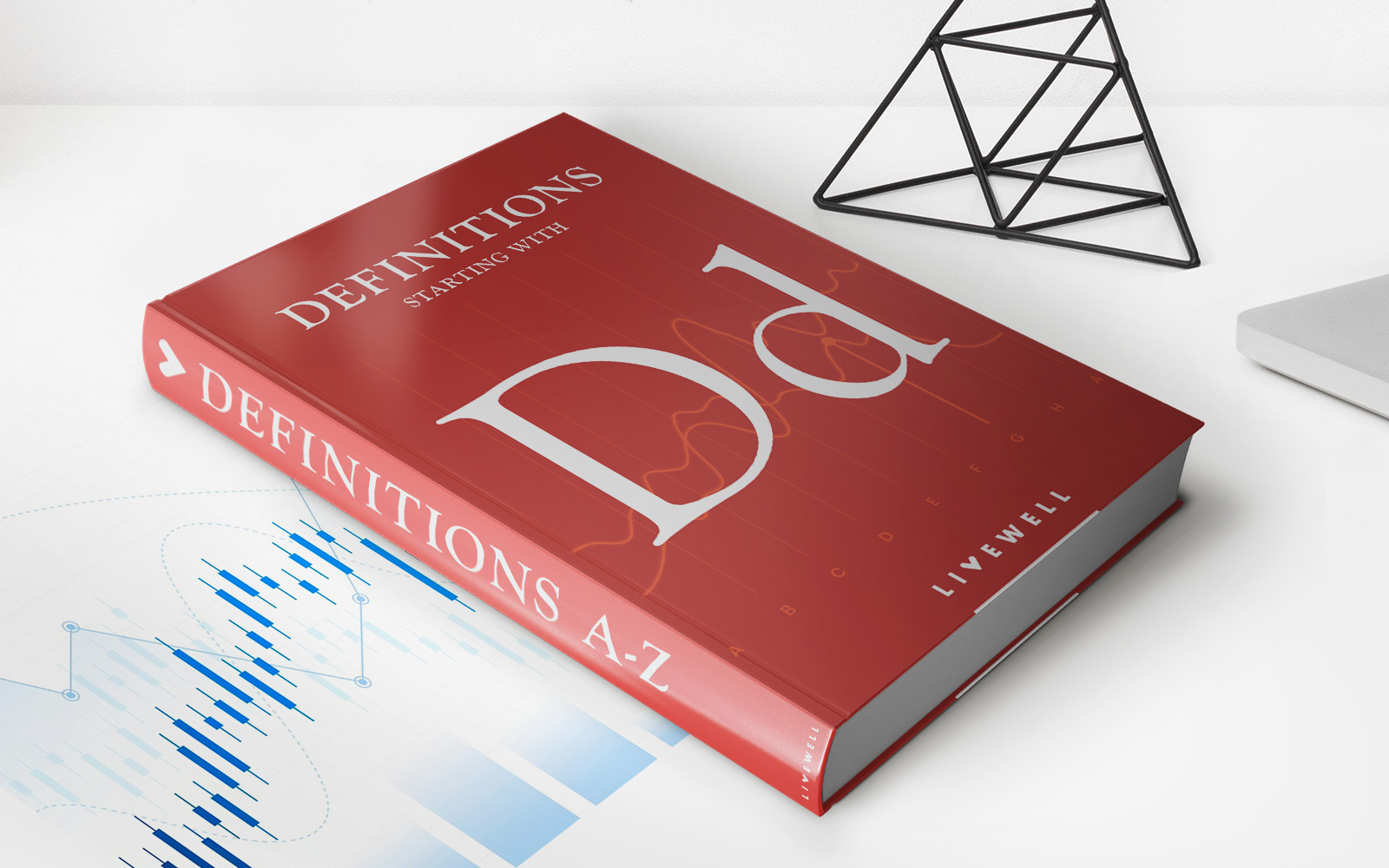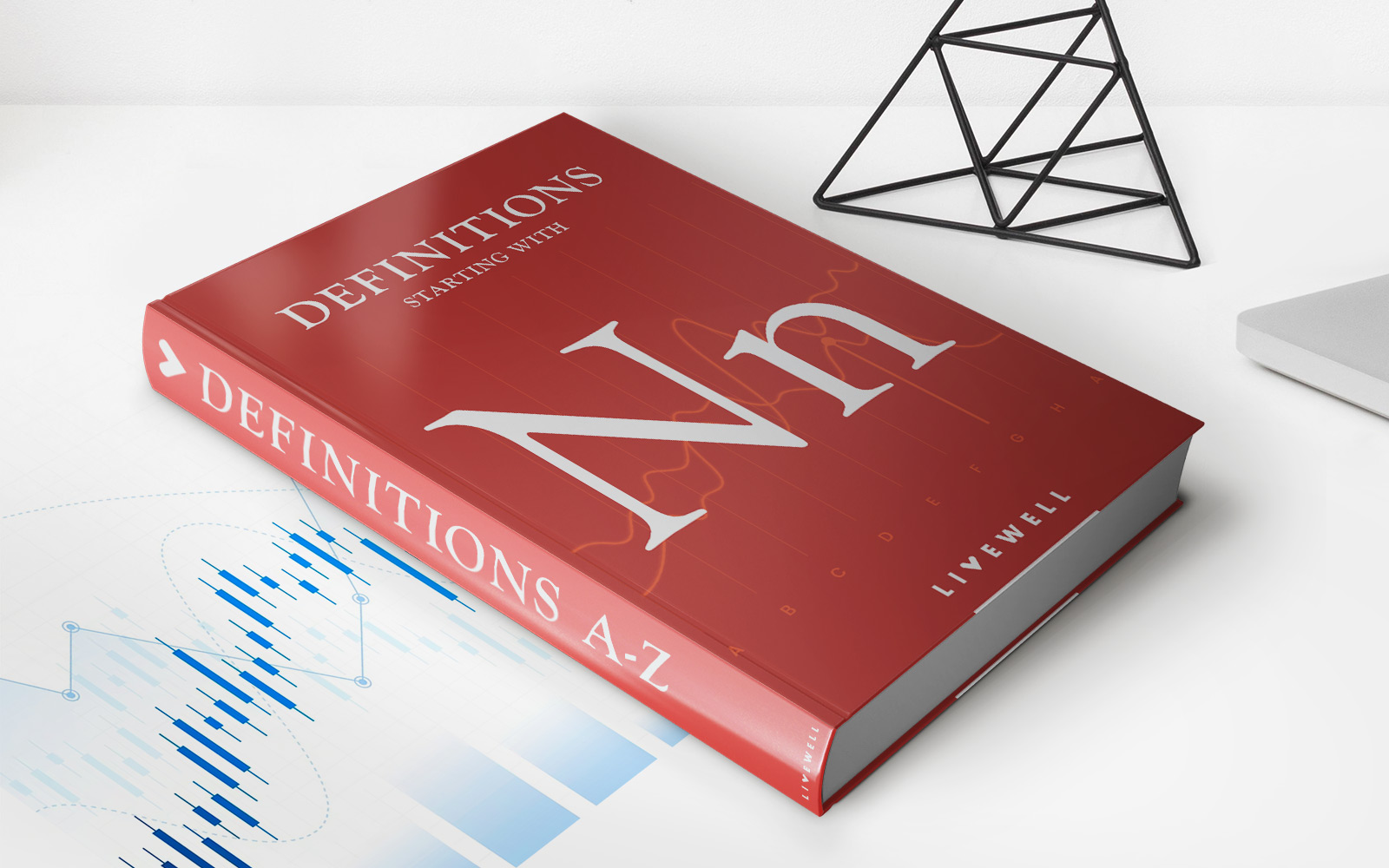Home>Finance>How Do You Add Cash Savings To Retirement Planning


Finance
How Do You Add Cash Savings To Retirement Planning
Published: January 21, 2024
Learn how to incorporate cash savings into your retirement planning strategy. Discover effective finance tips to secure a comfortable future.
(Many of the links in this article redirect to a specific reviewed product. Your purchase of these products through affiliate links helps to generate commission for LiveWell, at no extra cost. Learn more)
Table of Contents
Introduction
When it comes to retirement planning, many people focus primarily on investments like stocks, bonds, and real estate. While these are important components of a comprehensive retirement strategy, it’s equally crucial to consider the role of cash savings. Cash savings can provide a safety net, offer flexibility, and help ensure a comfortable retirement.
Adding cash savings to your retirement plan means setting aside a portion of your income in easily accessible accounts that are separate from your everyday spending. This money can be used for emergencies, unexpected expenses, or even to supplement your retirement income.
In this article, we will explore the importance of incorporating cash savings into your retirement planning, the various options available for cash savings, the benefits of including cash savings in your retirement strategy, and the steps to effectively add cash savings to your retirement plan.
Whether you are decades away from retirement or nearing the end of your career, understanding the role of cash savings in your retirement plan can help provide financial security and peace of mind. Let’s dive in and explore the world of cash savings and retirement planning.
Importance of Adding Cash Savings to Retirement Planning
When it comes to retirement planning, it’s easy to get caught up in the excitement of investing in stocks, bonds, and other assets. While these investments can provide substantial returns over the long term, they also come with a level of risk. That’s where cash savings can play a vital role in your retirement strategy.
One of the primary reasons for adding cash savings to your retirement plan is the ability to have a financial safety net. Life is unpredictable, and unexpected expenses or emergencies can arise at any time. Having cash savings allows you to handle these financial challenges without dipping into your retirement investments.
Furthermore, cash savings offer flexibility and liquidity. Unlike stocks or real estate that may take time to sell, cash savings can be accessed immediately when needed. This liquidity can be especially beneficial during market downturns or economic downturns when selling investments may not be ideal.
Another key aspect of cash savings is the ability to supplement your retirement income. Social security benefits and pension payments may not be enough to cover all your expenses in retirement. By including cash savings as part of your retirement plan, you have an additional income source to tap into, helping you maintain a comfortable and financially stress-free retirement.
Moreover, cash savings provide peace of mind. Knowing that you have a buffer of liquid assets can alleviate financial anxiety and allow you to enjoy your retirement years without constantly worrying about money. You can use your cash savings to enjoy leisure activities, travel, or pursue hobbies, knowing that you have a financial cushion to fall back on.
Finally, adding cash savings to your retirement plan ensures that you have funds available for short-term goals and needs. While retirement may be your primary focus, it’s important to have money set aside for milestones such as buying a house, paying for education, or taking care of healthcare expenses.
In summary, incorporating cash savings into your retirement planning is essential for several reasons. It provides a safety net, offers flexibility and liquidity, supplements your retirement income, brings peace of mind, and allows for short-term aspirations. By considering cash savings alongside your investments, you can build a well-rounded retirement plan that caters to your current and future financial needs.
Types of Cash Savings Options for Retirement
When it comes to cash savings for retirement, there are several options to consider. Each option has its own features and benefits, so it’s important to choose the ones that align with your financial goals and risk tolerance. Let’s explore some common types of cash savings options for retirement:
- Savings Accounts: The most basic form of cash savings is a traditional savings account offered by banks and credit unions. These accounts typically offer a low interest rate but provide easy access to your funds. They are a safe option for storing short-term cash savings but may not offer high growth potential.
- Money Market Accounts: Money market accounts are similar to savings accounts but typically offer higher interest rates. They may require a higher minimum balance and may have some limitations on the number of transactions you can make each month. Money market accounts are a suitable option for individuals looking for slightly higher returns while maintaining liquidity.
- Certificates of Deposit (CDs): CDs are time deposits offered by banks and credit unions. They require you to deposit a fixed amount of money for a specific term, ranging from a few months to several years. CDs generally offer higher interest rates compared to savings accounts, but they have penalties for early withdrawal. They are a good option for individuals who can lock away their cash savings for a predetermined period of time.
- Treasury Bonds: Treasury bonds, issued by the U.S. Department of the Treasury, are considered one of the safest forms of investment. They offer fixed interest rates and have maturities ranging from a few months to 30 years. Treasury bonds provide a reliable and low-risk option for individuals seeking stability and regular income.
- High-Yield Savings Accounts: High-yield savings accounts are similar to regular savings accounts but offer higher interest rates. They are typically online-based accounts offered by financial institutions that have lower overhead costs and can pass on the savings to customers. High-yield savings accounts are a good choice for individuals looking to maximize their savings’ growth potential without sacrificing liquidity.
It’s important to note that the interest rates on cash savings options can vary depending on market conditions and inflation rates. Therefore, it’s advisable to review and compare interest rates regularly to ensure you’re earning a competitive return on your cash savings.
Additionally, it’s worth considering a combination of the above options to diversify your cash savings strategy. By spreading your savings across different types of accounts, you can balance accessibility, growth potential, and risk. This diversification can help protect your cash savings in various economic and financial scenarios.
Remember, cash savings options are intended for short-term goals and emergency funds. While they provide stability and liquidity, they generally offer lower returns compared to long-term investments. Therefore, it’s essential to carefully evaluate your financial objectives and allocate your cash savings accordingly.
Benefits of Including Cash Savings in Retirement Planning
When it comes to retirement planning, adding cash savings to the equation can provide numerous benefits that contribute to a secure and comfortable retirement. Let’s explore some of these key advantages:
- Financial Security: Cash savings act as a financial safety net during unexpected events such as medical emergencies or job loss. Having a cushion of readily accessible funds ensures that you can handle these situations without relying on credit or dipping into your retirement investments.
- Flexibility and Liquidity: Unlike long-term investments that may have restrictions or penalties for early withdrawal, cash savings offer immediate liquidity. This allows you to access funds quickly and easily, providing flexibility in managing your retirement expenses or taking advantage of potential opportunities.
- Supplementing Retirement Income: Social security benefits and pension payments may not be enough to cover all your expenses in retirement. By including cash savings in your retirement plan, you have an additional income source to tap into. This can help bridge the gap between your regular income streams and your desired lifestyle, ensuring a more comfortable retirement.
- Peace of Mind: Knowing that you have a dedicated pool of cash savings for emergencies or unforeseen circumstances can provide a sense of security and peace of mind. It eliminates the worry and stress of having to constantly rely on investments or loans to cover unexpected expenses.
- Short-Term Financial Goals: While retirement planning is focused on the long term, there may be short-term goals or milestones you want to achieve. By including cash savings, you have the means to pursue these aspirations, such as purchasing a home, funding a child’s education, or traveling during retirement.
- Protection Against Market Volatility: Cash savings act as a buffer during market downturns. When investment portfolios experience losses, having cash on hand ensures that you can cover expenses or delay selling assets until market conditions improve.
- Emergency Fund: Cash savings serve as an emergency fund, providing the financial means to handle unexpected expenses without disrupting your overall retirement plan. This fund can cover healthcare costs, home repairs, or any other unforeseen circumstances that may arise.
By including cash savings in your retirement planning, you create a well-rounded strategy that combines stability, flexibility, and financial security. It allows you to navigate the ups and downs of life with confidence, knowing that you are prepared for any situation that comes your way.
Remember, while investing in assets like stocks and bonds can lead to significant returns, they come with inherent risks. Having cash savings as part of your retirement plan provides a level of stability and control. It ensures that you have funds readily available to handle emergencies or take advantage of opportunities without compromising your long-term investments.
Overall, including cash savings in your retirement planning offers peace of mind, protection against market volatility, flexibility, and the ability to achieve your short-term goals. It is a critical component of a well-thought-out retirement strategy, helping you create the retirement lifestyle you desire.
Steps to Add Cash Savings to Retirement Planning
Adding cash savings to your retirement plan is a proactive step towards ensuring a secure financial future. Here are some essential steps to help you effectively incorporate cash savings into your retirement planning:
- Evaluate Your Current Financial Situation: Begin by assessing your current financial situation, including your income, expenses, and debts. This evaluation will help determine how much you can allocate towards cash savings without compromising your daily living expenses and other financial obligations.
- Set Clear Goals: Define your retirement goals and the amount of cash savings you aim to accumulate. Having specific goals in mind will help you stay focused and motivated throughout the saving process.
- Create a Budget: Develop a budget that allows you to save a certain percentage of your income specifically for retirement cash savings. Track your expenses and identify areas where you can cut back to free up more money for savings.
- Choose the Right Cash Savings Options: Research and select the cash savings options that align with your goals and risk tolerance. Consider factors such as interest rates, fees, and accessibility. Diversify your cash savings across different accounts to maximize liquidity and potential returns.
- Automate Your Savings: Set up automatic transfers from your paycheck or checking account into your designated cash savings accounts. This will ensure consistent contributions and make saving for retirement a seamless and effortless process.
- Monitor and Adjust: Regularly review your cash savings progress and make adjustments as necessary. Reassess your financial situation periodically to ensure that you are on track to meet your retirement savings goals.
- Take Advantage of Employer-Sponsored Plans: If your employer offers a retirement savings plan, such as a 401(k) or a similar program, take full advantage of it. Contribute the maximum amount allowed, especially if your employer offers matching contributions. This can significantly boost your cash savings while enjoying potential tax benefits.
- Continuously Educate Yourself: Stay informed about personal finance and retirement planning. Attend workshops, read books, or consult with financial advisors to enhance your knowledge and make informed decisions regarding your retirement cash savings.
- Revisit and Revise Your Plan: Life circumstances and financial goals may change over time. Regularly review your retirement plan and modify it as needed to adapt to new situations. Flexibility and adjustment are key to keeping your retirement cash savings plan relevant and effective.
Remember, adding cash savings to your retirement planning is a long-term commitment. It requires discipline, consistency, and a focus on your financial goals. By following these steps and staying committed to your retirement savings plan, you can build a robust financial foundation for a comfortable retirement.
Challenges and Considerations
While adding cash savings to your retirement planning offers numerous benefits, there are certain challenges and considerations to keep in mind. Understanding and addressing these factors will help you navigate potential obstacles and make informed decisions regarding your retirement cash savings:
- Inflation: One of the challenges of relying heavily on cash savings is the impact of inflation. Over time, the purchasing power of cash decreases due to rising prices. It’s crucial to consider investing a portion of your retirement savings in assets that offer the potential for higher returns to combat the effects of inflation.
- Low Interest Rates: In a low-interest-rate environment, traditional cash savings accounts may generate minimal returns. Explore alternative options like high-yield savings accounts or consider diversifying your portfolio with low-risk investments that offer better potential returns than standard savings accounts.
- Emergency Fund Balance: While it is essential to have an emergency fund, it’s important to strike a balance between cash savings and other investments. Having too much cash readily available may result in missed opportunities for growth. Assess your financial needs and risk tolerance to determine the optimal amount for your emergency fund.
- Market Volatility: Depending solely on cash savings limits your exposure to potential market growth. While cash savings offer stability, it’s important to carefully weigh the opportunity cost of not investing in assets such as stocks or bonds that have historically shown higher returns over the long term.
- Needs versus Wants: Differentiating between essential expenses and discretionary spending is crucial. Ensure that your cash savings plan prioritizes necessary retirement goals, such as healthcare expenses and living expenses, before allocating savings towards discretionary items.
- Access to Funds: While cash savings provide liquidity, it’s important to strike a balance between accessibility and tying up funds for extended periods. Consider the potential penalties or restrictions associated with certain cash savings options like Certificates of Deposit (CDs) and Treasury bonds.
- Longevity Risk: Ensure your retirement cash savings plan accounts for the potential need for long-term care or support as you age. Incorporate long-term care insurance or similar strategies to mitigate the financial impact of extended healthcare needs.
- Regular Review: To ensure your retirement cash savings plan remains relevant, it’s important to periodically review and adjust it as needed. Life circumstances and financial goals can change, requiring you to revisit your plan and make necessary changes to stay on track.
By considering these challenges and factors, you can proactively address them and make informed decisions to optimize your retirement cash savings. Seeking guidance from a financial advisor can also provide valuable insight and expertise to navigate these considerations and create a well-rounded retirement plan.
Conclusion
Incorporating cash savings into your retirement planning is a strategic move that brings numerous benefits and ensures a secure financial future. While investments like stocks and bonds are essential, cash savings offer stability, flexibility, and a safety net for unexpected expenses.
By adding cash savings to your retirement plan, you create a financial safety net that protects you during emergencies and provides peace of mind. Cash savings offer liquidity and quick accessibility, allowing you to navigate market volatility and cover short-term goals without sacrificing long-term investments.
Additionally, cash savings serve as a supplement to your retirement income, helping you fund your desired lifestyle and bridge any gaps between your regular income and expenses. They act as a cushion against market volatility, providing immediate resources during downturns and protecting your overall retirement portfolio.
When adding cash savings to your retirement plan, evaluate your financial situation, set clear goals, and choose the right cash savings options that align with your risk tolerance. Automate your savings and regularly monitor your progress to stay on track. Take advantage of employer-sponsored retirement plans and continuously educate yourself on personal finance and retirement planning.
While there are challenges and considerations, such as inflation, low interest rates, and access to funds, addressing these factors and regularly reviewing your plan will help you maximize the benefits of cash savings in your retirement planning.
In conclusion, including cash savings in your retirement plan provides financial security, flexibility, and peace of mind. It ensures that you have funds readily available for emergencies, short-term goals, and supplementing your retirement income. By adopting a well-rounded approach that combines cash savings with other investments, you can create a comprehensive retirement plan that supports your long-term financial goals and allows you to enjoy a comfortable retirement.














